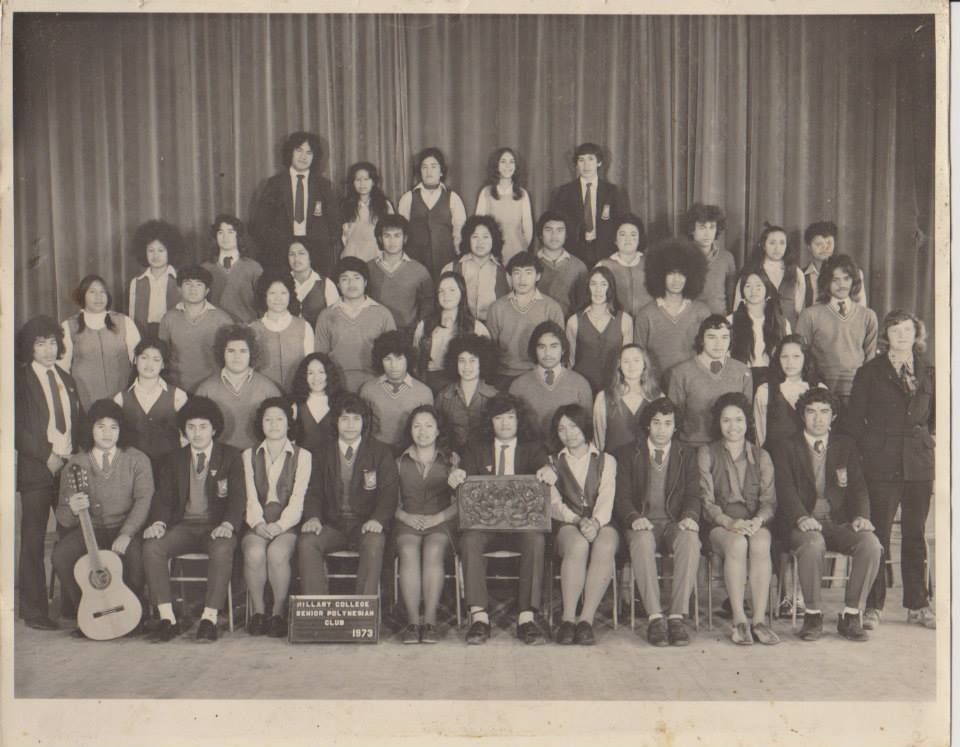

Sāmoa Stage packed to the brim during Saturday's 531pi lunchtime show hosted by PMN Sāmoa host To'oto'o Agapetos Leaupepe
Photo/PMN/Joseph Safiti
Students dream big for Polyfest’s next 50 years
Youth aspirations reflect a desire for a more inclusive and vibrant celebration that honours heritage while embracing new possibilities.





Unwanted sexual experiences ‘a public health crisis’ for Pacific youth, researcher says





Unwanted sexual experiences ‘a public health crisis’ for Pacific youth, researcher says
Traffic flowed freely on Monday as the streets reopened after the ASB Polyfest’s 50th celebrations electrified the Manukau Sports Bowl.
Known as the world’s biggest secondary school Polynesian festival, Polyfest has continuously fostered growth and success in students’ connections to culture, heritage, and identity.
Despite facing challenges this year, including a torrential downpour, stage cancellations, and funding pressures, Polyfest remains a multigenerational cultural pillar.
So what do today’s students envision for Polyfest 50 years from now?
“Better groups, more groups, and more people.” That’s the consensus of hope for Polyfest’s future.
“More parking,” suggests Middle School West Auckland student Tini Loko (Tuvalu, Niue).
Her friend, Kiana (Sāmoa), says, “Less expensive tickets” so more families can attend.
Some attendees reminisced [about] the days when Polyfest was a gold coin entry. This year, the fee was either $10 at the gate or $7.50 for a ticket purchased online.
Amiri Kiria (Cook Islands) from Sir Edmund Hillary Collegiate hopes inflation will stop affecting ticket prices, which can negatively impact cultural learning and family time.
“Bigger and better for the students. I think more students should join Polyfest, but yeah, free tickets for those that can’t pay for it because New Zealand is getting more expensive nowadays.
“Just thinking about those who can’t afford to come watch their children, free tickets would be the best.”
While most had practical suggestions, some young students from Finlayson Park School were more imaginative with their ideas.
Hamuera says, “If it’s staying here (Manukau Sports Bowl), probably the grass is all gone and concrete, concrete, concrete everywhere.”
Of course, a Polyfest staple is the kai, food. One student enjoying strawberries and chocolate says for him, that’s what it’s all about.
“More food. A larger stadium with more food options, perhaps even a restaurant. And maybe, just maybe, a waterpark.”
Micah Hill-Tupou (Tonga, Māori) from Papatoetoe High School believes this year’s theme, ‘Legacy’, is a reminder to proudly represent one’s heritage while dreaming of a brighter future.

Students bring the hype. Photo/PMN/Joseph Safiti
“Being where you come from, representing that as much as you can, and really doing it in everything you do.
“It will be a lot more festive, possibly even more stages for other groups and cultures as well. I’m not sure what it will look like, but I’m looking forward to what it could be.”
ASB Polyfest struggled to secure sponsorship for the Diversity stage, resulting in the loss of its usual location at the cycling track.

NiuFM's Lunchtime Show with The Morning Shack takes over the Niue stage. Photo/PMN/Joseph Safiti
The community rallied, and organisers of the Niue and Cook Islands stages hosted 119 diverse performances last Wednesday and Thursday.
Indian group members Sayisha and Aisa from Onehunga High School take great pride in sharing their cultural dance traditions and hope for even more diverse representation in the future.
“More people involved and just more cultures from around the world taking part in Polyfest,” Sayisha says.
Jade from Kelston Girls’ College is buzzing with school spirit and says one of her favourite parts of Polyfest is the multicultural environment and wants even more inclusion in the future.
“I think it will look better with more people showing their cultures and more dances.”
Pioneering Polyfest
With a record-breaking 291 cultural groups from 77 participating schools, the festival shows no signs of slowing down.
It’s a world of difference from its humble beginnings when plans were laid in 1975 for the first Polyfest held on 20 October 1976.
Four schools participated: Aorere College, Māngere College, Seddon College (now Western Springs College - Ngā Puna o Waiōrea), and Hillary College (now Sir Edmund Hillary College), which hosted the inaugural event in their school hall.

Hillary College 1973 Polynesian Club which also performed in the inaugural Polyfest. Photo/File
The first Polyfest had just six groups and 40 students and was known as ‘The Auckland Secondary Schools Māori and Pacific Islands Cultural Festival’.
As popularity grew, different schools took turns hosting the festival before it found a permanent home at the Manukau Sports Bowl in 1996.
Hundreds work behind the scenes to craft cultural attire, arrange music, choreograph performances, and compose items in the months leading up to performance day.
Attracting tens of thousands of people annually, Polyfest reigns as the most significant youth cultural festival in the world.
Polyfest was pioneered by students Michael Rollo and Mata (Te Kii) Raela, with the support of staff members Bill Tawhai Hone and Heni Green, who together envisioned the festival's potential for success.